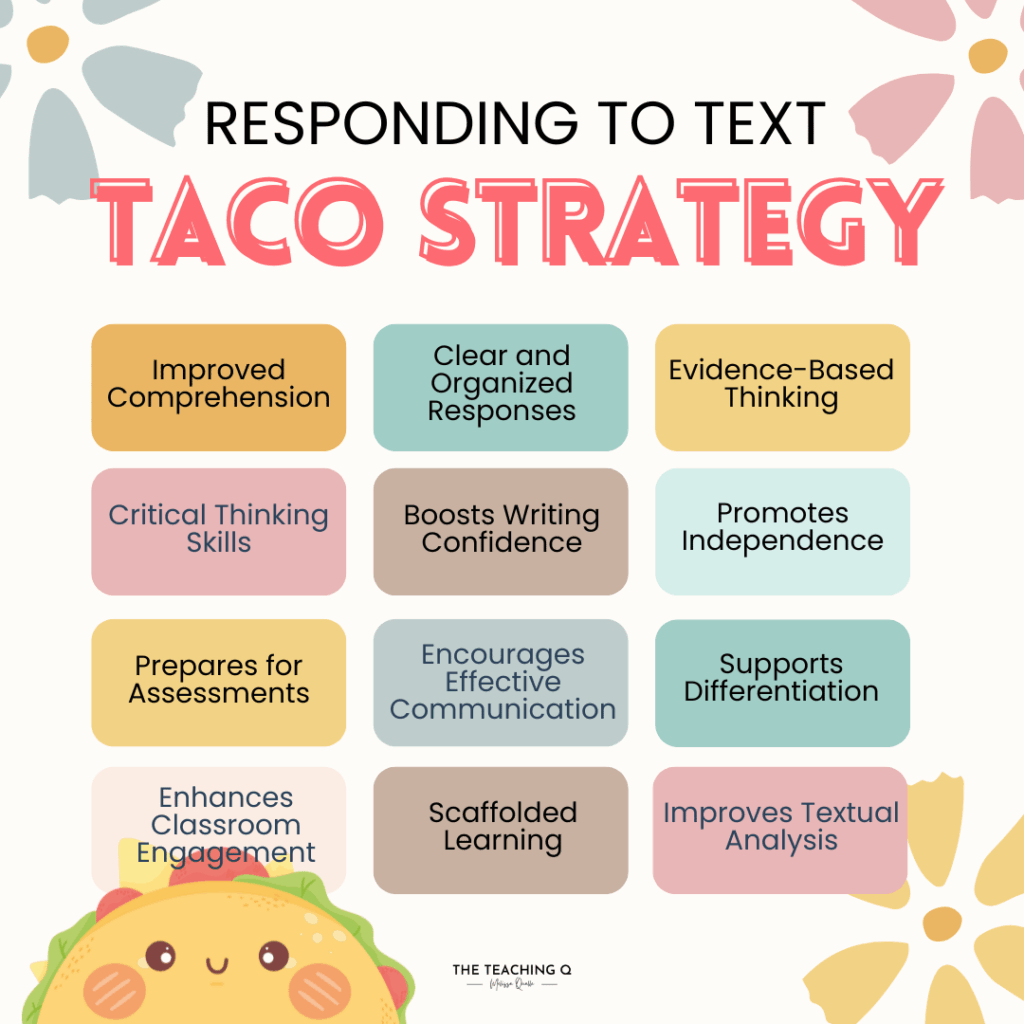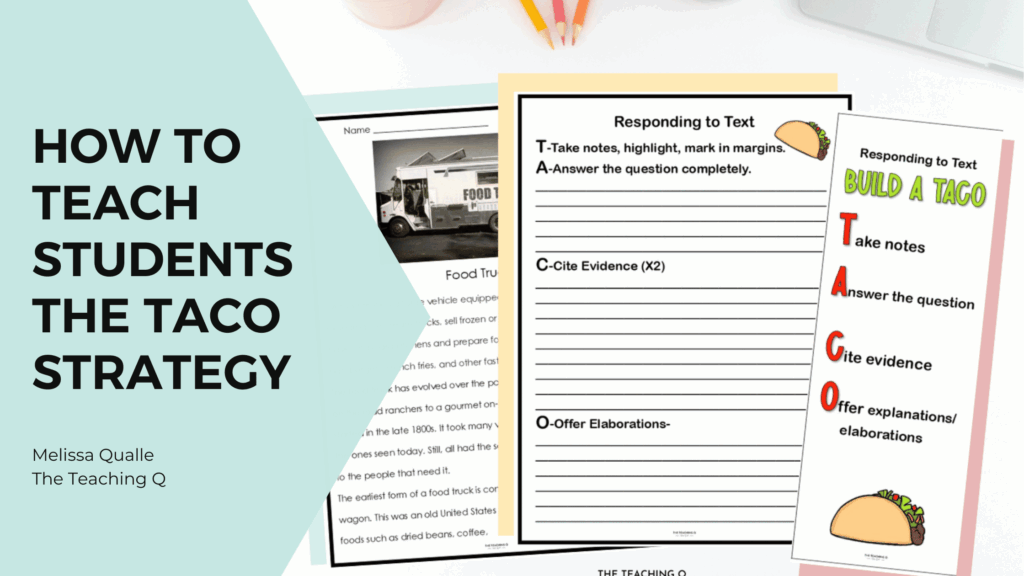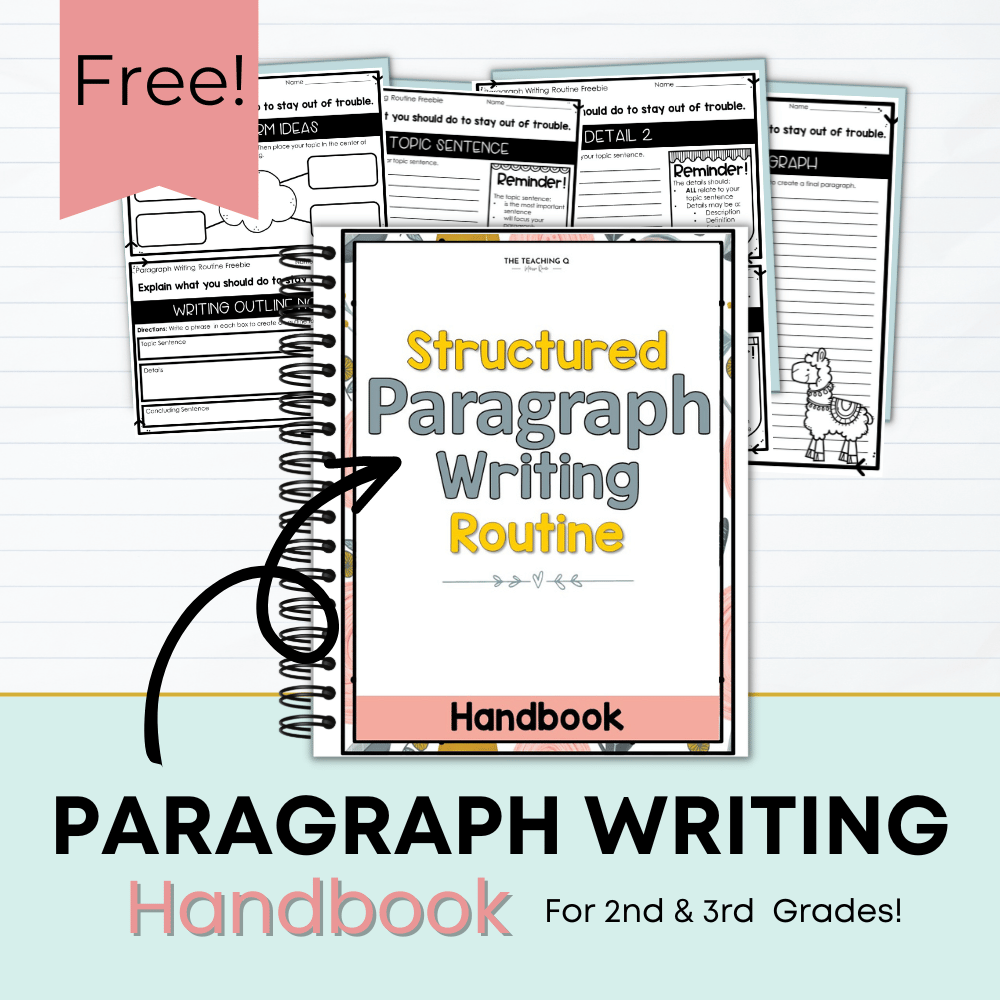Do your students freeze when it’s time to write about their reading? You’re not alone, teacher friend! Teaching students how to write a strong constructed response can feel tricky, especially in the younger grades. That’s why I created the Constructed Response Strategy—TACO, a simple, structured, and super engaging way to help students learn the constructed response format with success.
Let’s walk through how to help your students build thoughtful, organized answers—and have fun doing it!

📝 What Is a Constructed Response?
A constructed response is a short written answer that asks students to explain or justify their thinking, often using text evidence. These questions show up in reading comprehension tasks, classroom assessments, and standardized tests.
Unlike multiple choice, students must write out their thinking clearly and completely. That’s where the constructed response format for students becomes so valuable.
🌮 Why Use the TACO Strategy?
The TACO Strategy is a student-friendly way to teach the constructed response format in a memorable, engaging format. By following four simple steps, students can write responses that are clear, complete, and supported by evidence.
Even young learners can remember how to “TACO their response,” making writing less overwhelming and way more successful!

🌮 What Does TACO Stand For?
Each part of the TACO Strategy gives students a piece of the puzzle they need to write a strong, thoughtful answer.
T – Take Notes
Before writing, students pause to jot down key words or ideas from the question and the text. This sets them up for success and helps organize their thinking.
A – Answer the Question
This is the main idea of their response. Students write a clear sentence that directly answers the prompt using words from their notes.
C – Cite Evidence
Time to prove it! Students support their answer with details or quotes from the text. This shows they understood and can back up their thinking.
O – Offer Explanation and Elaborations
Students go deeper by explaining why the evidence matters or how it supports their answer. This is their chance to show critical thinking!
🌮 TACO Strategy Constructed Response Example
Let’s look at a sample second-grade reading prompt:
Prompt: Why did the fox try to trick the crow?
Step-by-Step:
T – Take Notes:
fox wanted cheese, tricked crow, said nice things
A – Answer the Question:
The fox tried to trick the crow because he wanted her cheese.
C – Cite Evidence:
In the story, he told the crow how beautiful her voice was so she would open her beak and drop the cheese.
O – Offer Explanation and Elaborations:
This shows that the fox used compliments to get what he wanted, even though it wasn’t honest.
🌟 Complete Student Response Using the TACO Strategy:
The fox tried to trick the crow because he wanted her cheese. In the story, he told the crow how beautiful her voice was so she would open her beak and drop the cheese. This shows that the fox used compliments to get what he wanted, even though it wasn’t honest.
This final answer shows a clear understanding of the question, includes text evidence, and explains the reasoning—all wrapped up in just a few sentences using the TACO strategy!

🌮 Teaching Tips for the Constructed Response Format
To help students master the TACO Strategy, try these teacher-loved tips in your classroom:
- ✅ Practice note-taking as a warm-up. Use short texts or read-alouds and have students jot down key words from questions and passages.
- ✅ Color-code each TACO step. Assign each part of the response a color to help students visualize the structure.
- ✅ Create a TACO anchor chart. Include visuals, definitions, and example sentences for each letter.
- ✅ Model writing together often. Use think-alouds and shared writing so students see the strategy in action.
- ✅ Provide sentence starters. These support students as they learn to write in complete, focused sentences.
✨ Sentence Starters for Each TACO Step
T – Take Notes (prewriting step)
- Jot down what the question is asking
- Highlight or underline key words in the question
- Write down important text clues or character actions
A – Answer the Question
- The character ______ because ______.
- One reason is…
- The problem was…
- The main idea is…
- I think ______ happened because ______.
C – Cite Evidence
- In the text it says…
- The author wrote…
- On page ___ it says…
- One example from the story is…
- I know this because…
O – Offer Explanation and Elaborations
- This shows that…
- This means…
- This is important because…
- This proves that…
- This helps me understand that…
Print these sentence-starters on writing folders, posters, or desk cards to build independence!

🌮 Benefits of Using the TACO Constructed Response Format
There are so many reasons to love the TACO Strategy when teaching constructed responses:
- ✏️ It gives students a clear plan to follow
- 🧠 It builds critical thinking and evidence-based reasoning
- 📚 It improves reading comprehension and text analysis
- 💪 It boosts confidence and writing independence
- 🎉 And best of all… It’s FUN and easy to remember!
🌮 Free Constructed Response Format PDF
Ready to start using the TACO Strategy in your classroom? I’ve created a free Constructed Response Format PDF just for you!
This FREEBIE includes:
- A student-friendly anchor chart with each TACO step
- Sentence starters to support every part of the response
- Note-taking and response templates
- Practice prompts ready to print and use
It’s perfect for small groups, test prep, writing centers, or whole-group lessons!
Click here to grab your FREE copy of the TACO Strategy-Constructive Response Format PDF.
🌮 Final Thoughts
Teaching students to write a constructed response doesn’t have to be stressful. The TACO Strategy gives kids a helpful framework they can count on, from note-taking to final sentence.
Let your students “TACO” their thinking—and watch their writing confidence grow! 🌮
Have you tried the TACO Strategy in your classroom? Drop a comment below or tag me @TeachingQ on Instagram—I’d love to see how your students are using it!
Happy teaching! 🌮
Melissa | The Teaching Q



